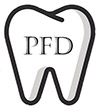
Many people suffer from tooth pain at some point in their lives. While the cause is commonly tooth decay, pain can also occur from gum disease, infection, trauma, abnormal bite and teeth grinding. Infants and small children often experience pain when teeth are erupting through the gums.
Source of Tooth Pain
Cavities and gum disease can both present with tooth pain. Food that is hot, cold or sweet can cause pain in a tooth with decay and if the pulp inside has become inflamed, this can also result in pain.
If pus is seen near the tooth, this can indicate gum disease or a serious infection that requires immediate treatment. Other symptoms that indicate a dental emergency:
- A fever
- Problems swallowing or breathing
- Swelling near the tooth
- Pain when biting down
- A bad-tasting discharge in the mouth
Relieving Tooth Pain
If a dentist cannot be seen right away, tooth pain may be treated by doing the following:
- Using a salt-water rinse
- Flossing the teeth to remove food particles
- Taking acetaminophen, ibuprofen or aspirin. Children should never take aspirin and should be given acetaminophen instead.
- Using a pain-relieving gel that contains benzocaine
- Placing a cold compress against the cheek or jaw if there has been trauma
How a Dentist Treats Tooth Pain
The dentist will conduct a visual exam of the painful tooth and take x-rays to see if there is a more serious problem inside the jaw. Antibiotics or pain medication may take care of the problem but in some cases, a root canal procedure or extraction may have to be done.
Preventing Tooth Pain
A regular routine of oral hygiene is the best way to prevent toothache. After a person finishes a meal, bacteria in the mouth consume starch and sugar, which produces an acid that damages teeth and causes cavities. Untreated cavities can cause a great deal of pain and may eventually destroy the tooth.
A good oral routine consists of:
- Brushing at least twice per day
- Flossing once per day
- Seeing the dentist every six months for an exam and cleaning.
